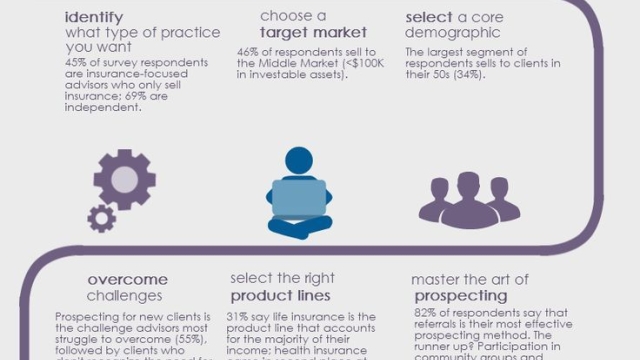As a business owner, protecting your assets and investments should be a top priority. One area that often gets overlooked is insurance, specifically commercial property insurance. This type of coverage is designed to safeguard your physical business assets, including your building, equipment, and inventory, against unexpected perils such as fire, theft, or natural disasters. However, navigating the intricacies of commercial property insurance can be overwhelming. With the daunting amount of information available, it’s important to demystify the subject and ensure you have a comprehensive understanding of how this insurance works in order to make informed decisions for the protection of your business. In this Ultimate Guide to Protecting Your Business, we will explore the key aspects of commercial property insurance, discussing its importance, common coverage options, factors affecting premiums, and steps to take when filing a claim. By the end of this guide, you will feel empowered with the knowledge necessary to make informed choices when it comes to protecting your business assets. So, let’s dive in and unravel the complexities of commercial property insurance together.
Understanding Commercial Property Insurance
Commercial Property Insurance is a vital aspect of protecting your business. This type of insurance is specifically designed to cover the physical assets and property owned by your company. Whether you own a small retail store, office space, or a large manufacturing facility, commercial property insurance provides coverage for potential risks and damages.
With commercial property insurance, you can safeguard your business against a range of perils. These perils may include fire, theft, vandalism, natural disasters, and other unforeseen events that could damage or destroy your property. By having this insurance in place, you can mitigate the financial impact of such incidents and ensure that your business can recover quickly.
It’s important to note that commercial property insurance not only covers the structure of your building but also the contents inside it. This means that not only are you protected against damages to the physical structure, but also against the loss or damage of your business equipment, inventory, furniture, and other assets. By having comprehensive coverage, you can have peace of mind knowing that your business is protected from potential financial losses.
In conclusion, commercial property insurance is an essential investment for any business owner. It provides protection for both the physical structure of your property and the valuable assets within it. By understanding the importance of commercial property insurance and selecting the right coverage for your specific needs, you can ensure the continuity and success of your business, even in the face of unexpected events.
Key Coverage Options
When it comes to protecting your business, having the right insurance coverage is crucial. Business insurance, particularly commercial property insurance, offers a wide range of coverage options that can safeguard your assets and mitigate potential risks. Understanding these key coverage options is essential for ensuring comprehensive protection for your business.
Property Damage Coverage: One of the fundamental coverage options offered by commercial property insurance is property damage coverage. This protects your physical assets, such as buildings, equipment, and inventory, against damage caused by covered perils like fire, natural disasters, or vandalism. With property damage coverage, your business can recover financially from the cost of repairing or replacing damaged property.
Business Interruption Coverage: In the event of a disaster or unforeseen circumstances that render your business temporarily unable to operate, business interruption coverage can be a lifesaver. This coverage provides financial support to help cover lost income and ongoing expenses during the period of interruption. By compensating for lost profits, business interruption coverage ensures that your business can continue to meet financial obligations even when faced with unexpected disruptions.
Liability Coverage: Liability claims can arise from accidents or injuries that occur on your business premises. Commercial property insurance typically includes liability coverage, which protects your business against claims made by third parties for bodily injury or property damage. Whether it’s a slip and fall accident or a customer’s property getting damaged while on your premises, liability coverage can help cover legal expenses and potential settlements.
By familiarizing yourself with these key coverage options provided by commercial property insurance, you can make informed decisions to safeguard your business. Customizing your insurance policy to meet your business’s specific needs and risks can provide the ultimate protection, giving you peace of mind to focus on the growth and success of your business.
Tips for Choosing the Right Policy
When it comes to selecting the right insurance policy for your business, there are a few key factors to consider. By keeping these tips in mind, you can make an informed decision that provides the coverage you need.
-
Assess your specific needs: Before diving into the options available, take the time to assess your business’s unique requirements. Consider the size of your commercial property, the nature of your business operations, and any potential risks that may be specific to your industry. This will help you determine the level of coverage you require.
-
Look for comprehensive coverage: Commercial property insurance should provide coverage for a wide range of risks, including property damage, theft, and loss of income due to disruptions. Ensure that the policy you choose offers comprehensive coverage that adequately protects your business from these potential threats.

Compare quotes and policies: Don’t settle for the first policy you come across. Take the time to shop around and compare quotes from different insurance providers. Carefully review the policy details, including coverage limits and exclusions, to ensure that you are getting the best value for your money. Consider consulting with an insurance agent or broker who can help you navigate through the various options available.
By following these tips, you can make an informed decision when choosing the right commercial property insurance policy for your business. Remember, investing in the right insurance coverage is crucial for protecting your business from unforeseen events and ensuring its long-term stability.
















